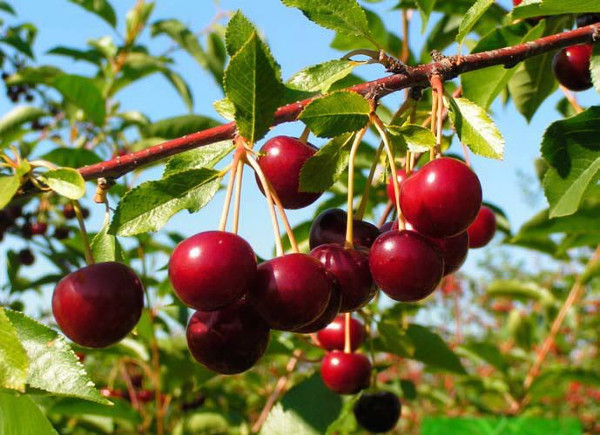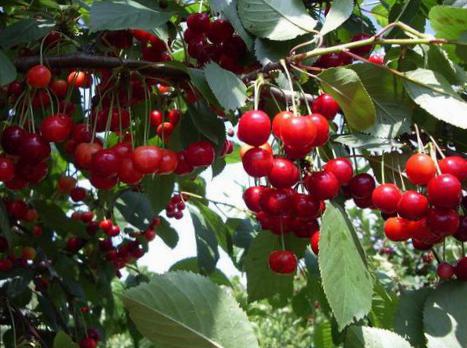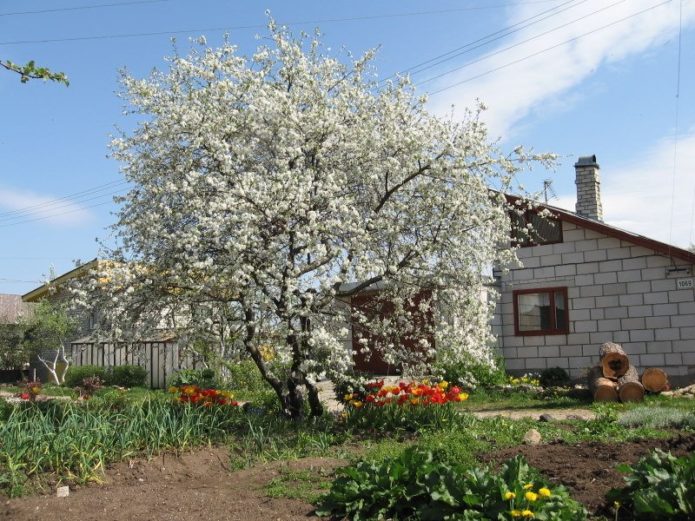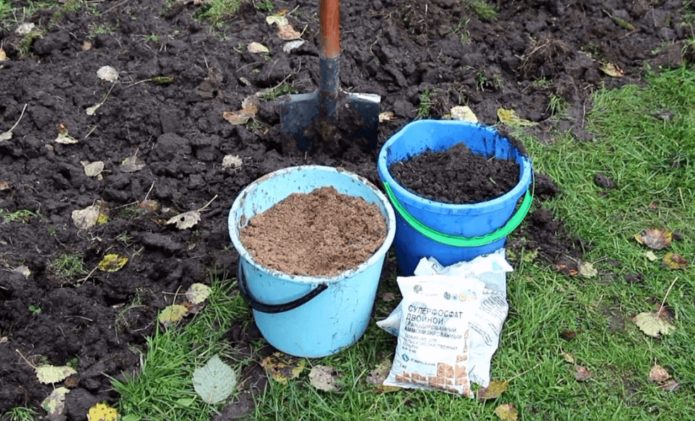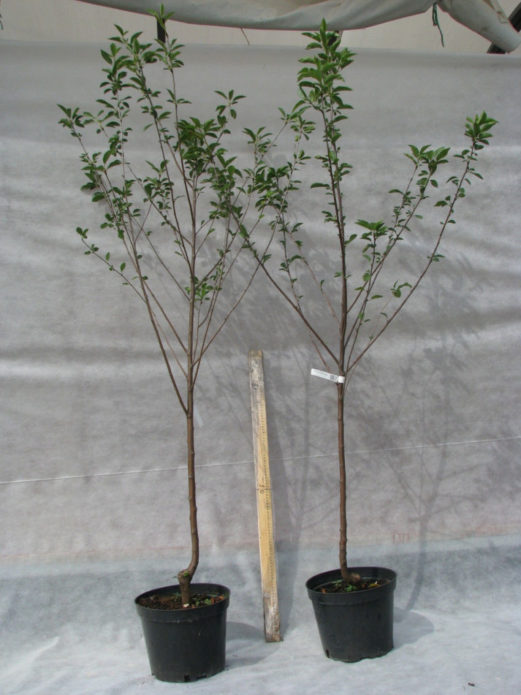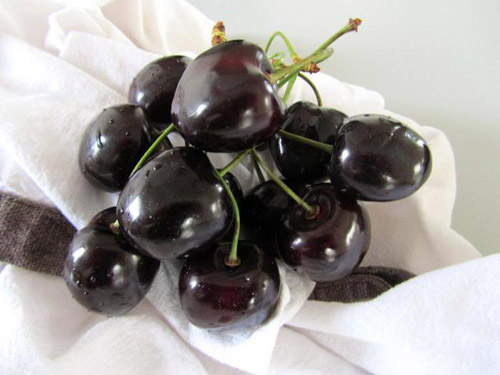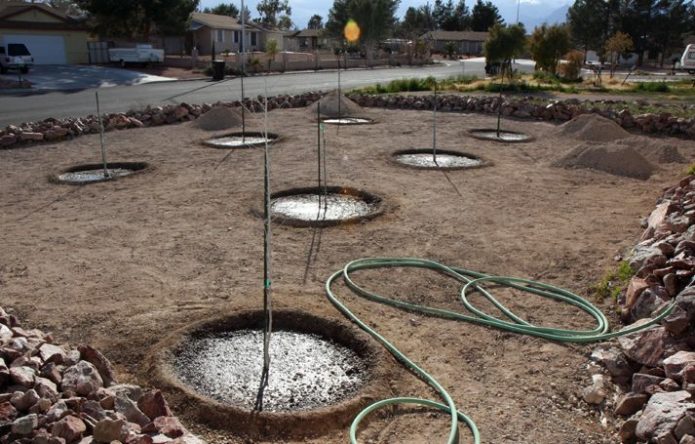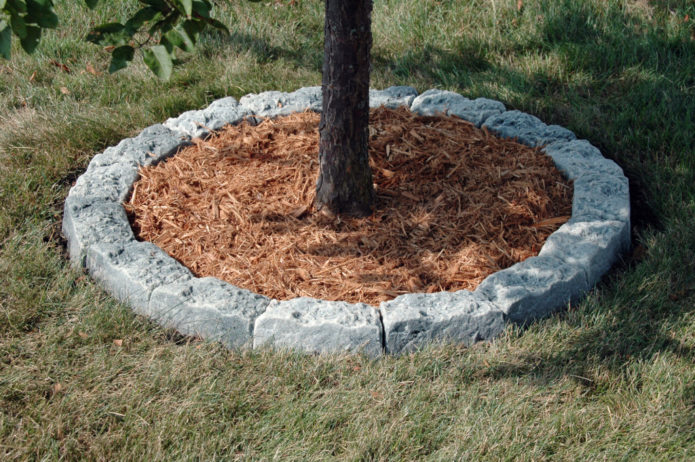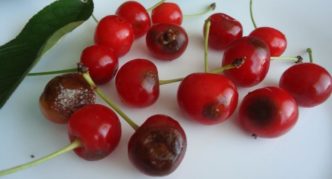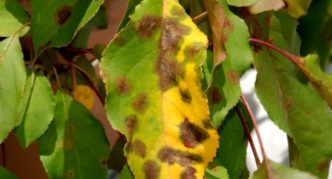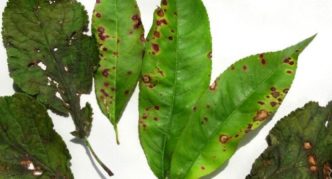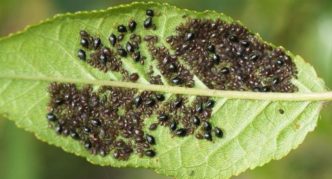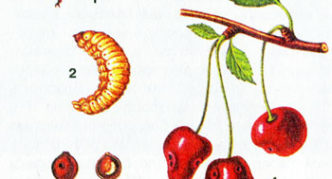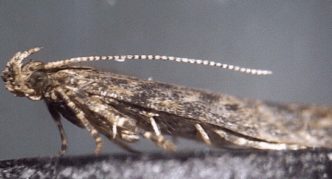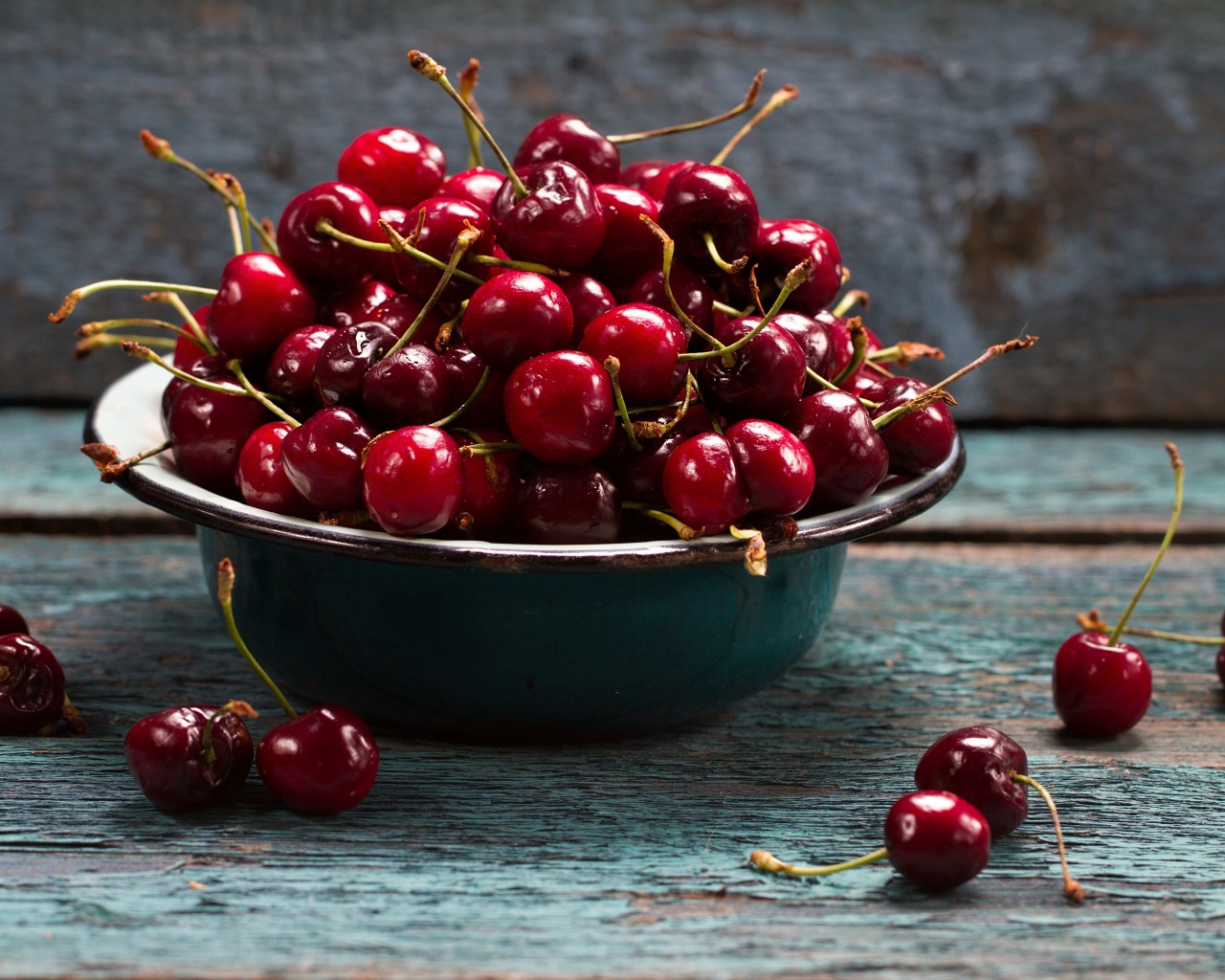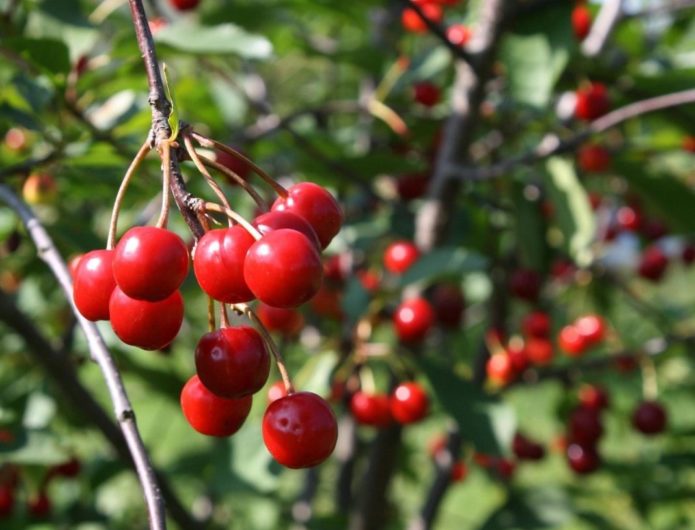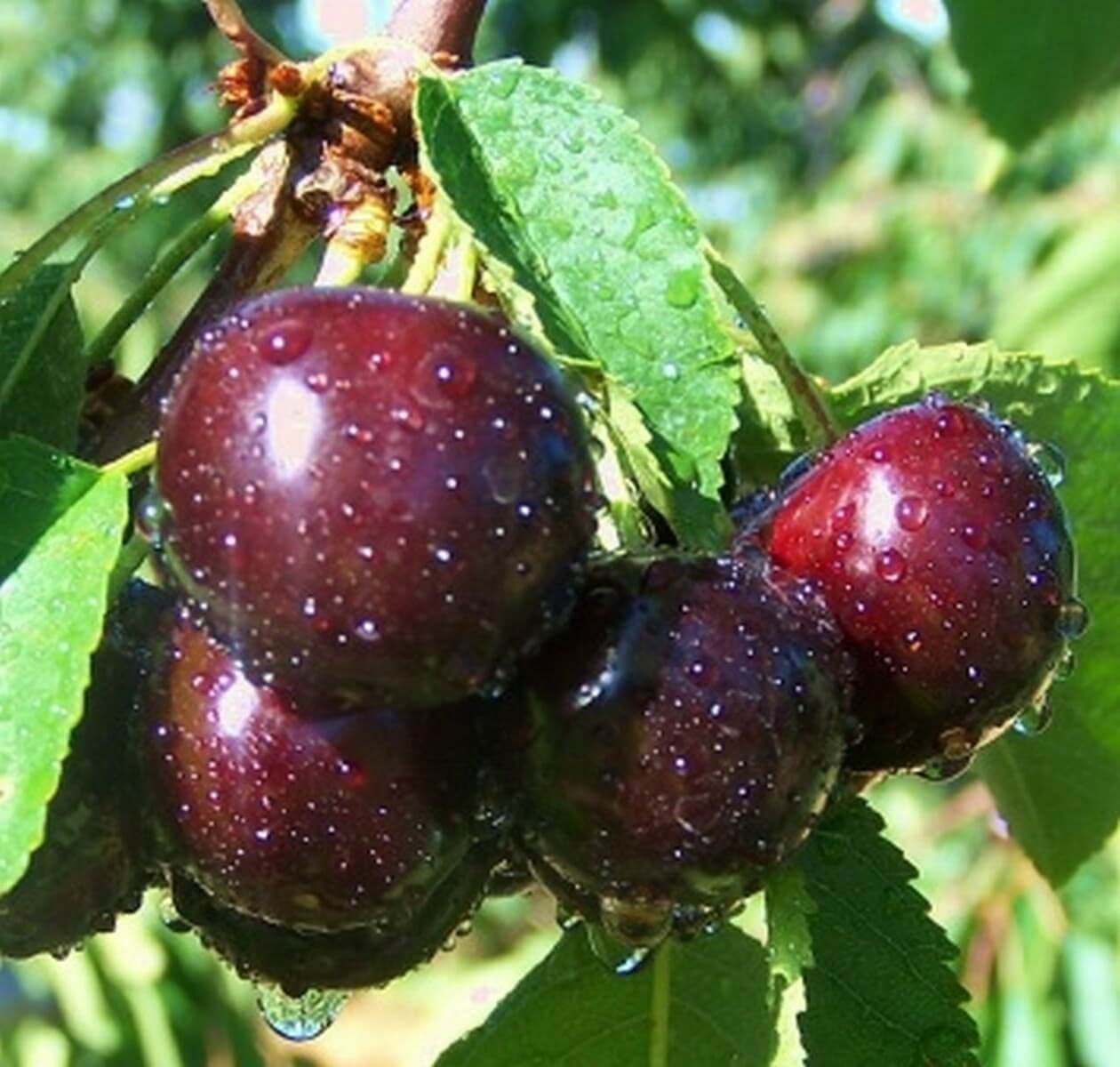The cherry orchard celebrated in the work of the classic has always been the pride of the gardener. For his favorite corner, every self-respecting specialist strives to get only the best varieties. Among the novelties, Novella cherry stands out for its positive qualities, the main of which is resistance to frost and disease.
Content
The history of creation and description of Novella cherry varieties
Cherry Novella is included in the State Register in 2001. The variety is suitable for cultivation in the Central Black Earth Region of Russia. The cherry trees in this area of the country often suffer from the most common stone fruit disease that causes early leaf fall and lowers productivity - coccomycosis. A genetic feature of Novella cherry is a high level of resistance to this disease.
In the mid-90s, a group of scientists at the All-Russian Institute for Breeding Fruit Crops in Oryol: O.D. Golyaeva, A.A. Gulyaeva, E.N. Dzhigadlo and A.F. Kolesnikova received a new promising variety, which was given a literary name - Novella. Rossoshanskaya and the coccomycosis resistance donor Vozrozhdeniye 1 were used as parental forms.
The Novella cherry tree reaches 3 m in height. The raised crown has a rounded, slightly spreading shape. Shoots are upright, smooth, brown-brown. The color of the bark of the stem and skeletal branches is brown. Buds are small, ovoid, slightly deviated from the shoots. The dark green leaves are ovoid. The texture of the sheet plate is smooth, matte.
The flower corolla is flat, open. The petals painted white are loosely arranged. A bouquet-like inflorescence consists of 4 flowers. Flowering occurs on average - May 10-18. Fruits are formed on the bouquet branches and growths of the last year.
Novella berries look very attractive - they are one-dimensional, wide-rounded-blunt with a slightly depressed top. Fruit weight at diameter in 2 cm reaches 4.5-5 g. The skin is glossy, dark red, almost black. The stone is small - its weight does not exceed 5% of the total mass of the berry, round, yellow. It separates from the pulp easily.
The pulp is of medium density, dark red, juicy. The tasters rate the pleasant sweet and sour taste at 4.2 points.
Characteristic features of the variety:
- The variety has good early maturity. You can evaluate the taste of Novella as early as 3-4 years after planting.
- The harvest ripens in the 20th of July.The general yield indicator is on average 78 c / ha, the maximum is 100 c / ha. But Novella does not show stable fruiting.
- Ripe berries do not crack in wet weather. Their high rate of transportability is also noted.
- The variety has a genetic predisposition to longevity.
- An adult cherry shows very good winter hardiness in the Central Black Earth Region. However, flower buds often suffer from recurrent frost.
- A clear advantage over other varieties is its high resistance to coccomycosis. Moniliosis is weakly affected.
- Another plus of the variety is its partial self-fertility.
Table: advantages and disadvantages
| Advantages | disadvantages |
| Early maturity. | Unstable fruiting. |
| The fruits are of high quality: they do not crack, they are well transported. Outwardly attractive, tasty. | Average resistance of flower buds to recurrent frosts. |
| Partial self-fertility. | |
| Quite a high yield. | |
| Excellent frost resistance. |
Landing rules
Planting consisting of several step-by-step processes will help the seedling quickly adapt to new conditions.
How to choose the right place
When choosing a permanent place for the Novella variety, you will have to consider the following factors:
- cherry loves sunny and warm places;
- there should be enough space for the development of a tree - at least 3 m to the nearest neighbor;
- the southwest or west section of the garden is suitable. On the south side, the ground warms up faster, so cherry blossoms will bloom earlier. But due to return frosts, flowers may suffer, therefore, this will affect the amount of the crop.
It is not worth planting Novella in the shade. The tree, of course, will grow, but the berries will not gain the prescribed mass, and the taste will not please - sourness will prevail in it.
The direction of the winds should also be taken into account, especially in winter. It is a good idea to cover the seedling behind a fence or buildings. Still, a small crown blowing should be present.
Refuse to plant Novella in trenches or lowlands. Cold air masses accumulating there will negatively affect flowering. In addition, such areas are often flooded during melting snow or after heavy rain. And the cherry root system has an extremely negative attitude towards excessively moist soils. In this regard, it is also worth considering the occurrence of groundwater - not higher than 1.5 m from the surface.
Cherry is not very capricious in terms of the mechanical composition of the soil. The main requirement is light, nutritious and loose soil mixtures with good aeration. These requirements are met by light loams, sandy loam or podzolic soils, common in central Russia. The acidity should be closer to neutral.
Acidic soils must be alkalized, otherwise the cherry will constantly hurt. For this, depending on the pH value, 200 to 700 g of lime per 1 m is added for digging.2.
Site preparation and planting pit
Since cherries have been growing in one place for quite a long time, before planting, you need to carefully prepare the site - clean it of stones, roots and ground plant debris. The depleted land must be restored. You can sow the selected piece with green manure a year before planting for further autumn digging, in the spring add rotted manure or humus, adding minerals to the organic matter - superphosphate and potash fertilizers.
Clay areas are dug up with the addition of a large amount of coarse sand and sawdust. These components will give the necessary looseness to the soil. A significant amount of peat is added to sandy soils, which is able to retain moisture.
It is also worth doing the preparation of the landing pit in advance.In order for the planned autumn planting to be successful, a hole must be dug and filled a month before. For spring planting, the preparation of the hole should be done in the fall.
- On the cleared plot of land, apply the dimensions of the future pit with a diameter of 70 cm.
- Dig a pit with sheer walls at least 50-60 cm deep.
- Set aside the fertile soil from the top layer, raised from the depths - you can scatter it in an even layer in the garden.
- Drive a stake at least 1.5 m high into the bottom of the pit. It will serve as a support for the seedling.
- If during the preparation of the site mineral fertilizers were introduced, then now you can limit yourself to organic matter - 1 tbsp. ash and 1 bucket of humus.
- Mix the set aside soil with organic matter and pour it into the pit.
- To make the soil mixture settle, pour water over it. 10 liters will suffice.
Sapling selection
While the mixture of soil and nutrients in the planting hole acquires the necessary structure, you can start choosing a seedling. Healthy planting material will provide crops for years to come. Examine the seedling taking into account the following points:
- a young tree should have an even trunk, covered with elastic bark, without wrinkles and wounds;
- pay attention to the forks. 3-5 branches up to 20 cm long is a good indicator of development;
- the root system should be sufficiently developed, with the main ramifications covered with a mesh of absorbent roots. Broken areas, rotten places, swelling are unacceptable. The root should be white when cut;
- when purchasing a seedling, ask about its age. 1–2-year-old plants take root well (a 1-year-old seedling has a straight trunk without branches, up to 1 m in height; a 2-year-old tree should be up to 1.5 m in height and have branches).
It is best to buy a seedling in the fall. Buy only zoned varieties. The seedlings brought from the south will take a long time to acclimate and get sick.
Landing dates
Cherry Novella is zoned in the Central Black Earth region, where a moderate continental climate prevails. In these conditions, the best time to plant would be late September - early October. Before the onset of a stable cold snap, the seedling will have enough time to take root reliably.
If for some reason you could not land within the specified time frame, you should not risk it. Cherries planted later risk dying from frost. The best option would be to dig in the seedling until spring.
Dig a trench 50 cm deep and place a tree in it at an angle of 450... The crown should be facing south. Sprinkle with soil prior to branching and provide protection from rodents.
Step by step process
- If the roots of the seedling are dry, immerse them in water for several hours before planting.
- At this time, prepare the hole by removing some of the soil from it, and collect the rest in the form of a cone at the bottom.
- Set the seedling vertically in the center at the top of the hill. The roots should lie neatly on the sides. Make sure they are not twisted and point straight down.
- Holding the trunk with one hand, carefully return the excavated soil back into the hole.
- To avoid the formation of voids in the roots, sometimes shake the tree by the trunk.
- After planting, lightly compact the soil around the roots and at the base of the trunk.
- Tie the seedling to a support.
- Build a watering circle with an earth rim around the edges.
- Pour 2 buckets of water into the resulting space.
- After completely absorbing moisture, cover the trunk circle with dry grass.
In a properly planted seedling, the grafting site should rise 4–6 cm above the ground.
Video: planting cherries
Pollinators
Despite Novella's partial self-fertility, she needs pollinators. One or two cherries blooming at the same time will help form a better crop. Suitable varieties are Shokoladnitsa, Griot Ostgeimsky, Vladimirskaya.
To attract bees to the site, which will help in the pollination process, experienced gardeners breed 1 tbsp. l. honey in 1 liter of boiled and chilled water. Flowers and buds are sprayed with this solution.
Care features
Proper agricultural technology will help the tree live a long life and delight the gardener with yields of juicy berries.
Pruning
Formative pruning is done immediately after spring planting or the next spring after fall. If the seedling is annual, it must be crowned at a height of 50 cm. In the upper part, about 5 buds should remain, which will subsequently develop into branches.
In a 2-year-old seedling, a stem up to 40 cm high is formed. All shoots and twigs in this section of the trunk are removed. To create the future crown, 5-7 lateral branches and a central conductor are left. The selected branches are shortened so that the main trunk rises above the skeletal ones by 20 cm. In tiers, as a rule, 4–5 branches are left.
The distance between the tiers is 60–70 cm, between the branches - 50 cm.
For a formed cherry, thinning pruning must be carried out, freeing the crown from branches growing inward or interfering with each other. You should use a well-sharpened garden tool, cover the sections with garden pitch.
Video: how to prune cherries
https://youtube.com/watch?v=5FuJqo8XFXc
Watering
Mature Novella cherry trees do not need frequent moisture, which leads to stagnation of water in the soil. For a fruit-bearing tree, the most important watering is done:
- at the final stage of flowering;
- in the process of fruiting. During this period, the laying of flower buds of the future harvest is also made;
- after falling leaves. Watering before winter will help the tree overwinter without loss. It should be carried out if the autumn is very dry.
A watering circle should be formed for watering. This will concentrate the water in the root zone and prevent it from spreading over the surface. The soil must be soaked to a depth of 40-50 cm. The watering rate is approximately 4–5 buckets per tree. The procedure is best divided into 2 stages - morning and evening, making half the dose for each of them.
Watering is stopped 2 weeks before the fruits are fully ripe.
Seedlings need to be given more attention. Watering of young animals is more frequent - 4–5 times a month, taking into account atmospheric precipitation. If you neglect this rule, the roots can suffer greatly from a lack of moisture, which will certainly affect the health of the tree in the future.
Top dressing
When Novella cherries enter the fruiting season, they need support in the form of nutrients. They need to be applied annually, starting from the 3rd year after planting. Top dressing can be divided into 3 stages.
- Spring. As a rule, spring dressing contains enough nitrogen for rapid growth of shoots and improved flowering. The best fertilizer during this period will be organic. It can be applied for digging along the perimeter of the crown or as a solution after watering. The amount of compost or manure for one adult tree is 20 kg. But this amount is best divided into 2 applications - before flowering and immediately after it. A solution of chicken manure is prepared from 1 part fertilizer and 1 part water. A well-mixed mixture is infused for 3-4 days and then filtered. Before watering, the concentrated top dressing is diluted in water in a ratio of 1:10.
- Summer. Usually during this period, cherries may lack any trace elements. Their deficiency can be identified by the appearance of the foliage.
In cherries that often suffer from a lack of iron, the leaves will begin to turn yellow at the edges, and their partial discoloration may be observed. With a lack of copper, growth slows down, the tips of the shoots die off, the leaves become lethargic, light green, with brown spots. With calcium starvation, young leaves curl upward, turn pale, possibly the death of shoots and ovary.Lack of nitrogen leads to leaf shrinkage, loss of color. The missing trace elements are introduced by the foliar method, strictly according to the instructions. - Autumn. She should help the cherry prepare for the coming winter. During this period, under digging, they bring in: 80 g of superphosphate, 30 g of potassium, 1 kg of ash.
Weeding, loosening and mulching
Weeds and excess root shoots must be removed. Thus, there is not a single chance for pests to move from grass to tree. Also, cherries do not compete with competitors for moisture and nutrition.
Loosening is carried out the next day after watering or rain. By breaking up the resulting crust, you help the roots of the plant to breathe normally. Mulching has the function of saving moisture in the soil. The mulched circle does not need to be loosened after watering. And weed grass under a layer of organic matter is not easy to break out.
Preparing for winter
The innate frost resistance of adult trees is quite enough to survive the winter. If cherries are well-groomed and well fertilized, they are not afraid of frosts. In a winter with little snow, the only necessary measure will be to warm the root zone. To do this, use a thick layer of mulch.
For seedlings, the stem and the base of the skeletal branches should be insulated with any material that allows air to pass through. It can be nylon tights, cardboard or covering material.
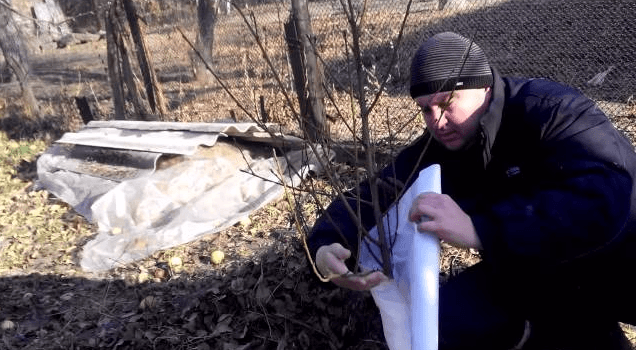
Preparing the seedling for winter, the stem and the base of the skeletal branches are wrapped with a covering material
Diseases and pests
The main advantage of Novella cherry is its excellent resistance to the main stone fruit disease - coccomycosis.
Table: how to defeat diseases and pests
| Diseases and pests | Characteristic symptoms | Control measures | Prevention |
| Anthracnose | At the beginning of the infection, dark spots appear on the berries, which grow and become covered with a pinkish bloom. The fruits lose their taste, in rainy weather they rot, and in dry weather they are mummified. |
|
|
| Scab | The berries become stained, which crack over time. Yellow spots appear on the leaves, gradually darkening and drying out from the center to the edges. |
|
|
| Clasterosporium disease | Small specks of red-brown color appear on the leaves affected by the disease. The diseased tissue dies off and crumbles. The leafy leaf soon falls off. In the middle stage of the disease, the fungus infects the fruit, turning them into dried balls, which also fall off. |
|
|
| Cherry aphid | Twisted young leaves and deformed shoots are the first signs of aphid infestation. Aphids are especially dangerous for young cherries. Their growth slows down, the formation of fruit buds is delayed. The tree weakens, becomes vulnerable to disease, and is less tolerant of winter frosts. | Processing should be carried out before cherry blossoms. Iskra, Fitoverm, Aktellik are suitable. Preparations should be alternated, as aphids develop immunity to pesticides. |
|
| Cherry weevil | A pest wintering in the soil in early spring climbs a tree and begins to eat buds, buds, flowers, leaves. In the pulp of the ovary, beetles gnaw through the passage to the very bone and lay eggs there. The developed larva in an immature bone eats away the hole and feeds on the nucleus. | Spray with Fitoverm immediately after flowering and again after a week. |
|
| Mining mole | The butterfly is nocturnal, so it is difficult to spot it. The caterpillar gnaws at the soft tissue of the leaves. Narrow and winding passages are visible on their surface. Premature leaf fall begins. Cherry grows weaker, loses its resistance to disease. | You can get rid of caterpillars with the help of Karbofos, Metaphos or Phosphamide. Processing is carried out before flowering. |
|
Photo gallery: by what signs to determine the disease and pests
- Anthracnose in wet weather can quickly destroy most of the crop
- Scab affects not only leaves but also berries.
- Clasterosporium is a disease that causes significant damage to the crop
- The cherry aphid greatly weakens the cherry, halting its development
- The cherry weevil gnaws at the fruit, leaving a larva inside
- Cherry miner moth makes cherries vulnerable to disease
Harvesting and methods of preserving it
You need to start harvesting as soon as most of the fruits ripen. Usually, the first ripe berries appear on the side that is best lit by the sun. In the middle of the crown, where sunlight penetrates worse, the fruits will ripen a little later.
There are several ways to collect cherries:
- pick berries without cuttings. Such fruits will not last long. They will have to be eaten or recycled as soon as possible;
- collection of cherries with cuttings. This, of course, is a time consuming process, but it will extend the shelf life of the berries. You need to pluck carefully so as not to damage the thin shoots;
- cutting the cutting with scissors. This method is good for long-term storage and is suitable for gardeners who market their product.
You need to put ripe berries in small boxes in a thin layer. Place damaged or wrinkled fruits in a separate container immediately.
Refrigerated at 20With humidity above 80%, cherries will be perfectly preserved for almost 2 weeks. Freezing or drying berries will significantly increase this period.
Housewives will be able to make a lot of different blanks from Novella cherries for the winter. Fragrant, slightly sour, jam is, perhaps, a hit of winter tea gatherings. Jam tastes great. Compote will delight lovers of cool drinks, and those who like it hot will appreciate the liqueur.
Reviews about Novella cherry
I bought myself another resistant variety - Novella. According to the characteristics, it is not bad, and so far it shines with health.
The novella is vigorous and not fast-growing. The main advantage is the high winter hardiness of wood. Flower buds freeze more. The fruit is quite cherry in appearance, size and taste. Even fresh, you can "peck", but better - for processing. The variety is relatively resistant to coccomycosis, but moniliosis “kots”.
Our Novella winters without problems (Tula region), although we have had winters with severe frosts and thaws in winter, but every season we collect a decent harvest of large, rich-dark cherries.We do not carry out any treatments against diseases. Our cherries do not have coccomycosis (summer leaf fall), although our neighbors' cherries began to hurt.
The Novella cherry, which looks like a bride in a white outfit, adorns the garden in spring, and in the middle of summer pleases with juicy and tasty berries. Many wonderful preparations for the winter can be made from the fruits. Enterprising gardeners who sell cherries on the market, Novella also liked. It has good keeping quality and perfectly withstands the hardships of transportation.
